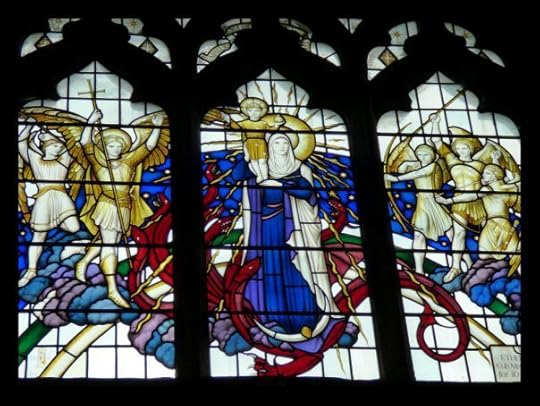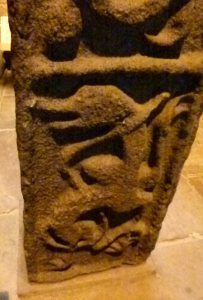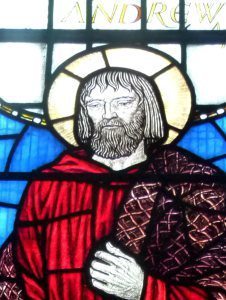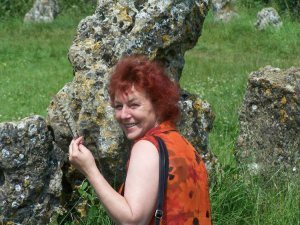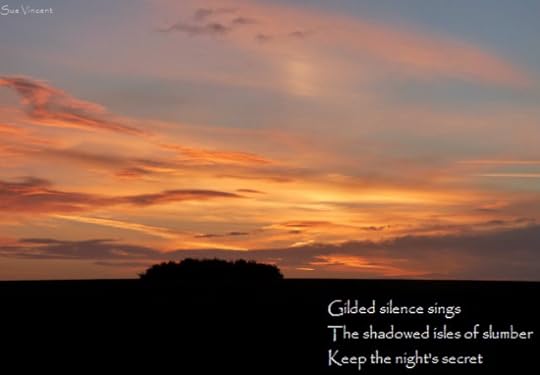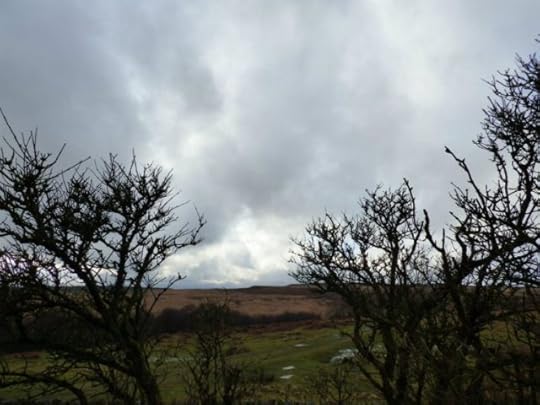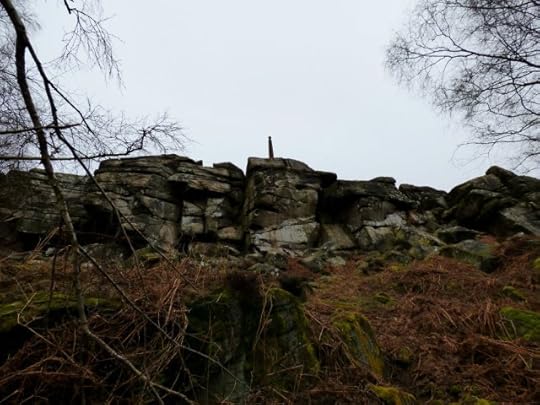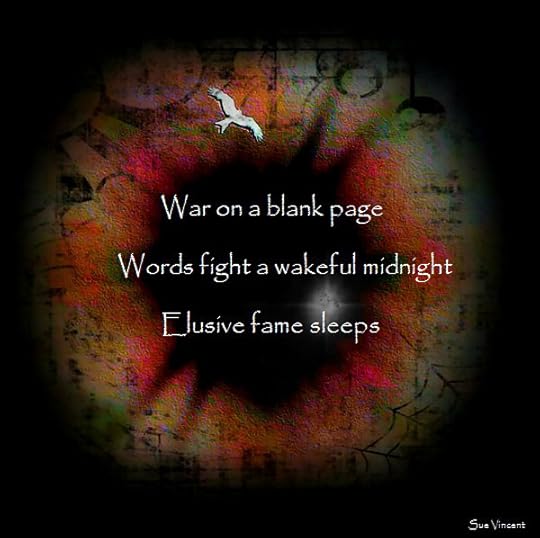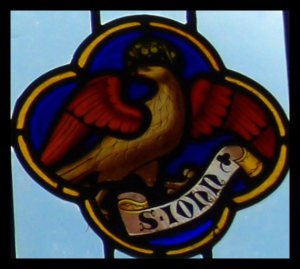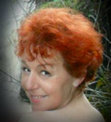Sue Vincent's Blog: Echoes of Life, page 1045
February 25, 2015
Silver
Death in a Dacron Sail: Cover Reveal
New book from Noelle Granger… available on Amazon now!
 Originally posted on SaylingAway:
Originally posted on SaylingAway:
Here it is!
On an icy February morning, Rhe Brewster, an emergency room nurse with a nose for investigation, is called to a dock in the harbor of the small coastal town of Pequod, Maine. A consultant to the Pequod Police Department, Rhe is responding to a discovery by one of the local lobstermen: a finger caught in one of his traps. The subsequent finding of the body of a young girl, wrapped in a sail and without a finger, sends the investigation into high gear and reveals the existence of three other missing girls of the same age, plus a childhood friend of Rhe’s. Battered by increasingly vitriolic objections from her husband, the pregnant Rhe continues her search, dealing with unexpected obstacles and ultimately facing the challenge of crossing an enormous frozen bog to save herself. Will she survive? Is the kidnapper someone she knows? In Death in a…
View original 47 more words

February 24, 2015
Dear Wen XVII
 Originally posted on Stuart France:
Originally posted on Stuart France:
You have provided an excellent answer… I particularly like the intuition, working from memory, which so cleverly ties the revelation to the evangelic mission.
It is, in my humble opinion, an even more eloquent statement than that which the lectionaries of the middle ages disseminated… and all from the top of your ‘no longer quite so russet bedecked’ head…
In broad terms, your idea of the wings raising us from the bestial works beautifully and is evidently a most appropriate insight.
My own revelation had to do specifically with the Zodiacal considerations of the symbolism and you nearly took me there with your cardinal points…
They refer though to the ‘quarter’ points which mean they form a ‘Saltire’.
There is more to the St Andrew legend than initially meets the eye.
I am certain that both Ezekiel and John had these astrological considerations in mind when employing…
View original 170 more words

Sharing a Smile
“I love you.”
Strong arms hold me in a fierce and joyful embrace. Eyes shine down, brimming with laughter. The handsome, bearded face smiles into mine.
“Will you marry me?”
No, I’m not dreaming. Though it may count as the quickest proposal in history. I tend to like to know someone for more than 30 seconds…
I had been minding my own business, trying to get in and out of the supermarket in record time when I was stopped by two young men, possibly in their mid thirties. The smaller one touched my arm and spoke, in desperate tones.
“You are a woman.”
This, I thought, was fairly self-evident and required no answer.
“A pretty one too,” said the giant Adonis, eyes twinkling with mischief. Ooh, how nice.
“We need to you settle a debate…” Advice on the tastes of womankind in general was asked and given… a sort of either/or situation. Apparently I sided with Adonis, and was rewarded with both hug and proposal.
A brief encounter, of no consequence, noteworthy simply because it made me smile.
It doesn’t take a lot, of course. I would far rather smile than frown and will generally do so just for the sheer joy of living. But you can’t beat the spontaneous smiles that arise from sharing a moment with another human being.
What made the moment stand out was not the laughing exchange of words, not even the compliment, but the momentary lack of any masks or barriers between three strangers. It is unusual, sadly, for strangers to approach each other, much less to talk, smile and laugh with each other for no real reason.
It struck me what a shame that is, and how many barriers to potential joy we put in our own way. We are so hemmed in by the way we are raised, our national character, perhaps, particularly in England with its traditional stiff upper lip and polite but distant smile.
I remember smiles…the ones that come from within and light up the eyes, illuminating the face that wears it and that of the one to whom it is directed. The eyes may be alight with mischief and laughter, or with gentleness and kindness, but the genuine smiles that come from the depths of being do not fade. They are healing, infectious and their beauty remains, from the first smile of an infant to the time when age has overlaid them with a tracery of lines.
June 2013
Reposted for the launch on Ronovan’s BeWoW venture.
Repton
 I parked by the Market Cross, the centre of medieval Repton with the old Mitre Inn behind it where, in 1848 the local history says that a man sold his wife for a shilling after bringing her with a halter around her waist from Burton on Trent. The story immediately reminded me of Thomas Hardy’s ‘The Mayor of Casterbridge’ which I had first read in school long ago. What they hadn’t told us in school was that the practice was neither a fiction nor a rarity. Some 400 such cases are recorded, the transaction being thought legal and binding if the wife was halter-led through the turnpike gate of a market and sold publicly before witnesses. According to this story both buyer and seller sealed the bargain over ale in the Mitre.
I parked by the Market Cross, the centre of medieval Repton with the old Mitre Inn behind it where, in 1848 the local history says that a man sold his wife for a shilling after bringing her with a halter around her waist from Burton on Trent. The story immediately reminded me of Thomas Hardy’s ‘The Mayor of Casterbridge’ which I had first read in school long ago. What they hadn’t told us in school was that the practice was neither a fiction nor a rarity. Some 400 such cases are recorded, the transaction being thought legal and binding if the wife was halter-led through the turnpike gate of a market and sold publicly before witnesses. According to this story both buyer and seller sealed the bargain over ale in the Mitre.
 I, of course, was headed for the church. If there is history to be unearthed that is always a good place to begin. I had tried to find Repton once before on a hot summer’s day and had searched in good earnest but to no avail. On Thursday I practically fell over the place by accident, so I was not about to pass up the opportunity to visit. There was once an Abbey here and a Priory, the remains of which are now part of the school and the church. But the church itself has a long history.
I, of course, was headed for the church. If there is history to be unearthed that is always a good place to begin. I had tried to find Repton once before on a hot summer’s day and had searched in good earnest but to no avail. On Thursday I practically fell over the place by accident, so I was not about to pass up the opportunity to visit. There was once an Abbey here and a Priory, the remains of which are now part of the school and the church. But the church itself has a long history.
 When Paeda sought to wed the Princess Alchflaed, daughter of King Oswiu of Northumbria, it was a condition of the marriage that he should adopt the Christian faith. His father, King Penda, was the last pagan king of Mercia, later killed in battle by Oswiu in 655AD. It is said that he fought alongside Christians and allowed the introduction of Christianity to his realm in 653 when some of the royal family were baptised in Repton, now a small village, but once the capital of Mercia.
When Paeda sought to wed the Princess Alchflaed, daughter of King Oswiu of Northumbria, it was a condition of the marriage that he should adopt the Christian faith. His father, King Penda, was the last pagan king of Mercia, later killed in battle by Oswiu in 655AD. It is said that he fought alongside Christians and allowed the introduction of Christianity to his realm in 653 when some of the royal family were baptised in Repton, now a small village, but once the capital of Mercia.
 The church was first built in the 700s, although of course the current fabric of the building is now mostly medieval with 19th century restorations by Arthur Blomfield. The square tower now sports a tall and incongruous spire dating to around 1340AD. However, even the carved stones, fragments of Saxon crosses and the columns in the porch were worth the visit, before I even opened the door, once barred no doubt with a huge oaken beam.
The church was first built in the 700s, although of course the current fabric of the building is now mostly medieval with 19th century restorations by Arthur Blomfield. The square tower now sports a tall and incongruous spire dating to around 1340AD. However, even the carved stones, fragments of Saxon crosses and the columns in the porch were worth the visit, before I even opened the door, once barred no doubt with a huge oaken beam.

Christianity had come to Repton with Alchflaed and the four monks who accompanied her from Lindisfarne… the same Holy Island we had so recently visited. The Abbey had been founded in 660AD as a double monastery for both men and women in the tradition of the Ionian church. Its first Abbess was St Werburgh, whose path had crossed our own several times lately and most noticeably at Chester. Early in the 8th century the crypt of the current church was built and became a royal mausoleum for the relics of the royal house of Mercia. It seems that the bodies were first interred then the bones, once clean, recovered and placed in the crypt.
 Sadly the crypt, usually open apparently, was locked and I was unable to enter a place that John Betjeman had called ‘holy air encased in stone’. It is one of the most intact survivals from the Anglo-Saxon era, preserved perhaps as it was closed and forgotten lost until it was rediscovered by a workman excavating a grave space in the nave in 1779. He fell through its roof.
Sadly the crypt, usually open apparently, was locked and I was unable to enter a place that John Betjeman had called ‘holy air encased in stone’. It is one of the most intact survivals from the Anglo-Saxon era, preserved perhaps as it was closed and forgotten lost until it was rediscovered by a workman excavating a grave space in the nave in 1779. He fell through its roof.
 In 793 the first of the Viking raids decimated the holy island of Lindisfarne and began the sacking of the north. By the early 9th century the crypt was pretty much as it is today and held the remains of kings. In 849 Wystan, a son of the royal Mercian line, was murdered. “His corpse was carried to a monastery which was famous in that age, called Repton, and buried in the tomb of his grandfather, King Wiglaf. Miracles from heaven were not wanting in testimony of his martyrdom; for a column of light shot up to heaven from the spot where the innocent saint was murdered, and remained visible to the inhabitants of that place for 30 days.” Florence of Worcester.
In 793 the first of the Viking raids decimated the holy island of Lindisfarne and began the sacking of the north. By the early 9th century the crypt was pretty much as it is today and held the remains of kings. In 849 Wystan, a son of the royal Mercian line, was murdered. “His corpse was carried to a monastery which was famous in that age, called Repton, and buried in the tomb of his grandfather, King Wiglaf. Miracles from heaven were not wanting in testimony of his martyrdom; for a column of light shot up to heaven from the spot where the innocent saint was murdered, and remained visible to the inhabitants of that place for 30 days.” Florence of Worcester.
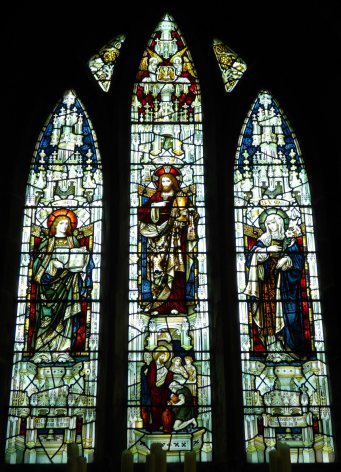
Click to see larger image
Repton became a place of pilgrimage until the saints remains were moved to escape the Great Heathen Army of Viking invaders in 873. The army overwintered in Repton and a mound has been excavated there containing the bones of around 250 of them, disarticulated and neatly stacked in piles of long bones and skulls.
 The church today reflects the whole of English history from that time onward… the scars and damage of the Reformation, the rebuilding and changes in fashion, the burials of medieval knights and Tudor dignitaries… it is all there to read in the glass, wood and stone of a little parish church. And of course, this was yet another raid on the quiet building… a fleeting visit, of no more than an hour. We will have to go back and see the crypt one of these days.
The church today reflects the whole of English history from that time onward… the scars and damage of the Reformation, the rebuilding and changes in fashion, the burials of medieval knights and Tudor dignitaries… it is all there to read in the glass, wood and stone of a little parish church. And of course, this was yet another raid on the quiet building… a fleeting visit, of no more than an hour. We will have to go back and see the crypt one of these days.

Secrets
Subject to change…
 Originally posted on The Silent Eye:
Originally posted on The Silent Eye:
The red kites lit the sky with their grace, but the weather did the landscape no favours. I drove away from the damp grey of Buckinghamshire without a qualm on Thursday, heading north for the monthly meeting of the Silent Eye… and a days of freedom from the constraints of necessity. I had plenty of time so planned a leisurely meander up the A5 which, for much of its course, follows the old Roman Iter II, better known by its Anglo-Saxon name of Watling Street. The rain would make travelling on the motorway hazardous with the spray and the inevitable lunatics, and I’d rather take the back roads any day.
I also thought I should probably, and finally, call at Lichfield Cathedral. I will have to at some point, but I am always too early on the way back and on the drive up I am usually too…
View original 760 more words

February 23, 2015
Anywhere…
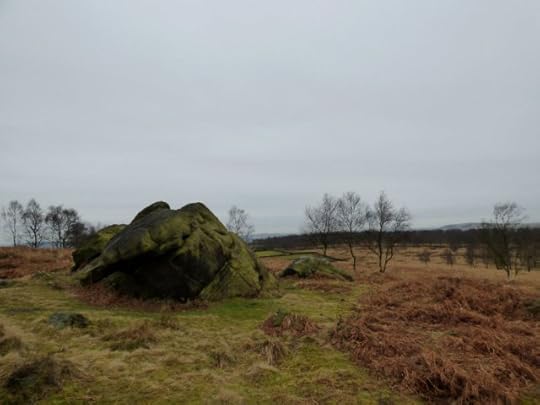 I drove home this morning as the long gold of a soft morning painted the world in pastel and shadows. I finally had a dawn to drive home with after the long winter darkness. By ten past six I was high on the moors, with just a sliver of light on the horizon as I reached the hills outside Sheffield, growing slowly to the blue of a virginal morning and blushing at the birds.
I drove home this morning as the long gold of a soft morning painted the world in pastel and shadows. I finally had a dawn to drive home with after the long winter darkness. By ten past six I was high on the moors, with just a sliver of light on the horizon as I reached the hills outside Sheffield, growing slowly to the blue of a virginal morning and blushing at the birds.
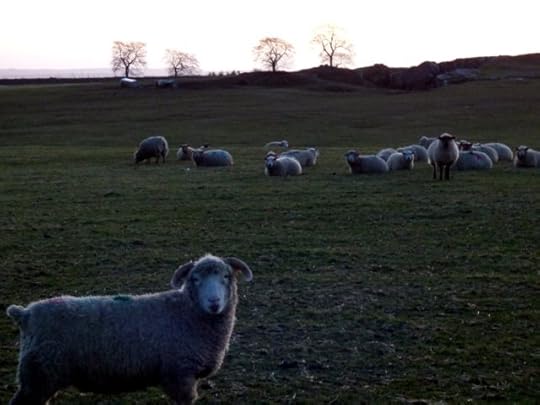 It had been a good weekend in the north and there was much to think about, much to plan and an awful lot to do as we begin the final stages of preparation for the Silent Eye’s April workshop. My mind was flitting between costumes for the principals, the crafting of a ritual and occasionally wandering off to smile at the odd moments and laughter that had been shared.
It had been a good weekend in the north and there was much to think about, much to plan and an awful lot to do as we begin the final stages of preparation for the Silent Eye’s April workshop. My mind was flitting between costumes for the principals, the crafting of a ritual and occasionally wandering off to smile at the odd moments and laughter that had been shared.
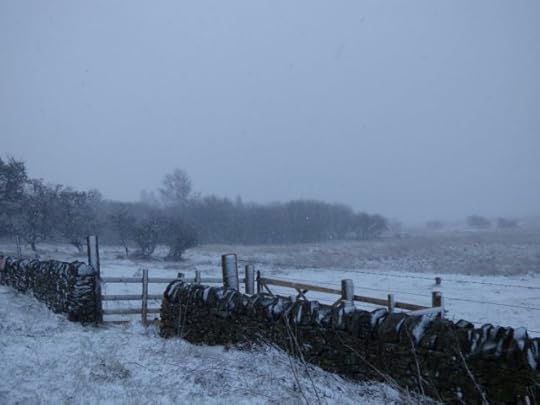 It had been a productive weekend too as we finalised our new little project and prepare for its publication. It is surprising how much work you can actually get through when anyone looking on would simply assume you were relaxing with a glass of red wine.
It had been a productive weekend too as we finalised our new little project and prepare for its publication. It is surprising how much work you can actually get through when anyone looking on would simply assume you were relaxing with a glass of red wine.
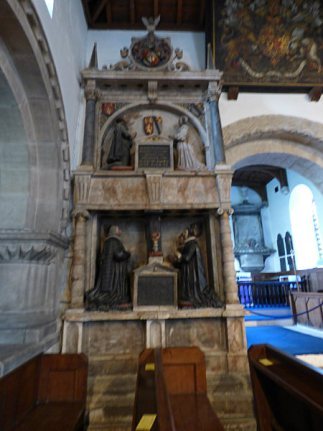 There had been churches and history, stone crosses and standing stones… even prehistoric rock art. There had been sunshine and spring flowers, as well as hail, rain and snow. We had watched bluetits and chaffinches in the woods and kestrels and buzzards in the air. We may even have managed to visit the odd hostelry or three. Well, maybe a few more…
There had been churches and history, stone crosses and standing stones… even prehistoric rock art. There had been sunshine and spring flowers, as well as hail, rain and snow. We had watched bluetits and chaffinches in the woods and kestrels and buzzards in the air. We may even have managed to visit the odd hostelry or three. Well, maybe a few more…
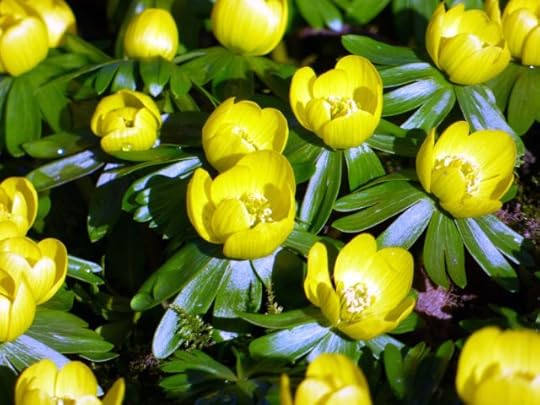 I drove straight back to work, to hailstones, an overflowing of inboxes and followed that up with a crisis before managing to collect Ani at tea-time and bring her home. The house had been tidy till then… within ten minutes the cushions are back off the sofa, the toys all over the floor and the birds in the garden duly chastised for their trespassing. In spite of the winter cold and the lateness of the hour, she is sitting in the open doorway watching the night while I freeze. Suddenly I know I am back. But I upload the photos from the weekend and then… well, I could be anywhere or any when… except that these are the colours of home.
I drove straight back to work, to hailstones, an overflowing of inboxes and followed that up with a crisis before managing to collect Ani at tea-time and bring her home. The house had been tidy till then… within ten minutes the cushions are back off the sofa, the toys all over the floor and the birds in the garden duly chastised for their trespassing. In spite of the winter cold and the lateness of the hour, she is sitting in the open doorway watching the night while I freeze. Suddenly I know I am back. But I upload the photos from the weekend and then… well, I could be anywhere or any when… except that these are the colours of home.

Midnight
February 22, 2015
Dear Don XVII
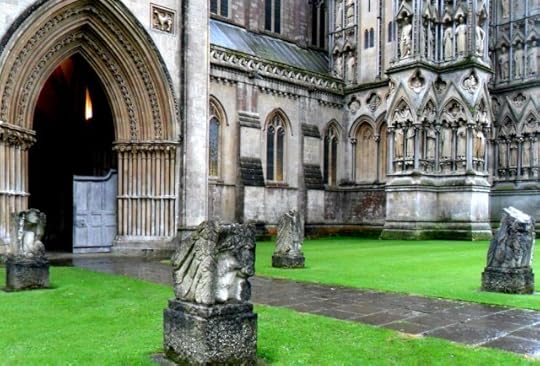
Four Holy Creatures, Wells Cathedral
Dear Don,
Well no, I didn’t answer your question…. I thought it was rhetorical. I really should have known better, shouldn’t I? I gather you have something in mind and I’m assuming we are not drawing on specialist knowledge here but simply looking at the images as one would take a seed thought for a meditation…starting from scratch, as it were?
So… “Were I to ask you for example why the four holy creatures are used to symbolise the four evangelists…without recourse to books or internet… what would you say?”
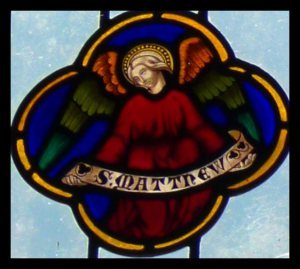 For a start I would look at the simple fact that there are four… and Revelation mentions the Four Holy Creatures… no, it was four Living creatures, if I recall, which has to be significant. They are described as the now traditional figures of Man, Calf, Eagle and Lion and said to have wings covered in eyes, yes? And they sing the praises of God… doesn’t it say something about the praises of the Creator and One who is to come? So, as symbols of the Evangelists, who ‘sing the praises’ of Jesus and His ministry, that would tie in nicely as they themselves ‘reveal’ the message.
For a start I would look at the simple fact that there are four… and Revelation mentions the Four Holy Creatures… no, it was four Living creatures, if I recall, which has to be significant. They are described as the now traditional figures of Man, Calf, Eagle and Lion and said to have wings covered in eyes, yes? And they sing the praises of God… doesn’t it say something about the praises of the Creator and One who is to come? So, as symbols of the Evangelists, who ‘sing the praises’ of Jesus and His ministry, that would tie in nicely as they themselves ‘reveal’ the message.
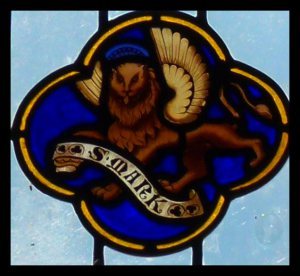 I wonder when they became so associated? It has to be after the Books that are now part of the standard New Testament were decided upon… There were more than four Gospels originally, as we know…
I wonder when they became so associated? It has to be after the Books that are now part of the standard New Testament were decided upon… There were more than four Gospels originally, as we know…
I would then look at other ‘fours’… the seasons and cardinal points, for example and the geometric form of the square… the firm foundation. (I would probably digress at that point and wonder whether the square fits within the circle, or the circle in the square and that fact that both can be true and what that suggests… and wander down further tangential and triangular pathways…)
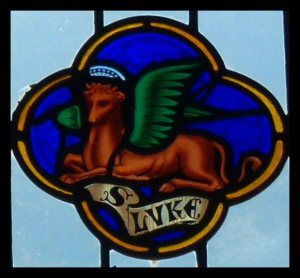 I might be able to drag my thoughts back and tie the Four to the Qabalistic worlds and alchemical Elements which are also associated with the Creatures. But that implies specialist knowledge, so I could simply look at the pictures and contemplate the character of each Gospel to see where that led. But I don’t know the specific tenor of each of the Gospels well enough by heart… and anyway, we are supposed to be looking without prior knowledge.
I might be able to drag my thoughts back and tie the Four to the Qabalistic worlds and alchemical Elements which are also associated with the Creatures. But that implies specialist knowledge, so I could simply look at the pictures and contemplate the character of each Gospel to see where that led. But I don’t know the specific tenor of each of the Gospels well enough by heart… and anyway, we are supposed to be looking without prior knowledge.
So I would go back to the image and simply look. What are the images trying to say? The creatures are all winged… a higher aspect of whatever they are trying to depict, then.
Mark as the Calf… sacrifice? Service? It is a domesticated animal, so maybe obedience? They are all Christian virtues… where does that lead? Luke as the Lion…strength, fierceness…the fire of passion… then lift it higher to dedication? Matthew… a winged man; the higher intellect… to lift the mind towards something more than logic and reason, perhaps. For me that would suggest Gnosis. John as the Eagle… taking flight, like the soul, into the Sun…
So looked at thus simply, the images themselves become a guide book of Christian virtue, showing how to be raised from the bestial on the wings of faith to their symbolic heights.
And having answered your question, O Feral One, you, no doubt, will distil all that into a single, elegant phrase…
The other Beast, meanwhile… whom I’m sure has a place in the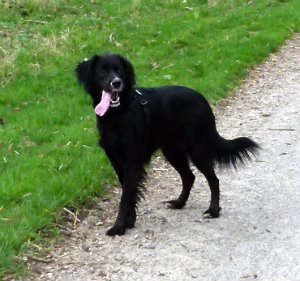 Apocalyptic vision even if there is a shortage of horns… is demanding a walk, freezing or not.
Apocalyptic vision even if there is a shortage of horns… is demanding a walk, freezing or not.
Love,
Wen and Anu x





